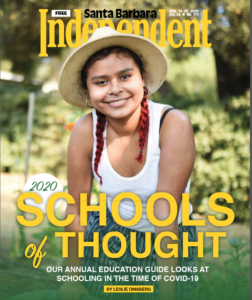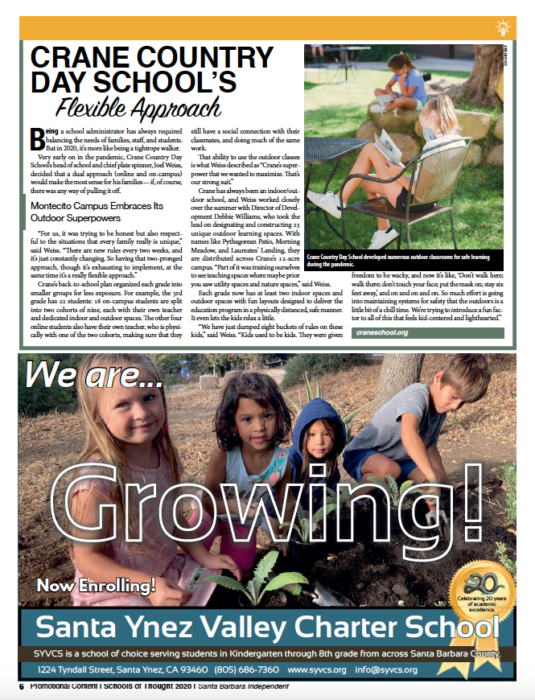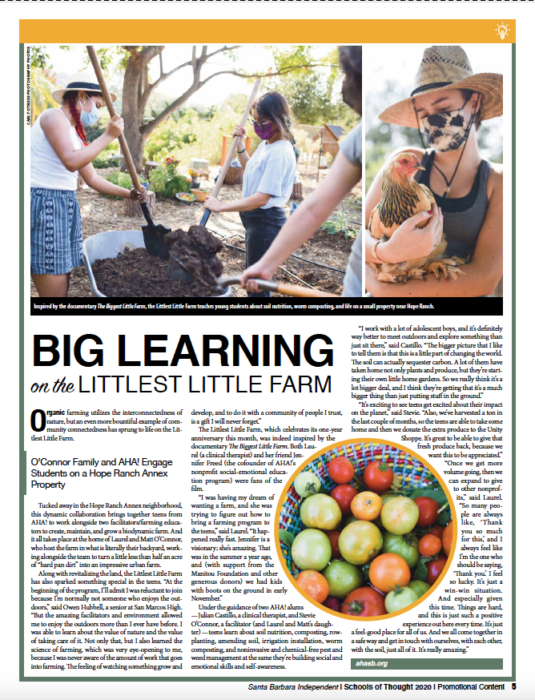
Waldorf Education Honors the Head, Heart and Hands. Originally published in Santa Barbara Independent on November 19, 2020.
101-Year-Old Tradition Offers a Holistic Approach to School
The 101-year-old Waldorf educational tradition is still thriving today at The Waldorf School of Santa Barbara. One of the key components is the whole child educational approach, which Administrator Teddy Macker described as, “Trying to encourage the intellectual,
artistic, and practical capacities of our children equally in a loving, reverent holistic manner, and I think that in itself is unique.”
Instead of “teaching to the test,” as a focus, “We want our children to flourish as human beings, wholly,” said Macker. “So we privilege working in the garden like we might privilege math. We privilege painting like we privilege history, so it’s an integrated, holistic curriculum wherein all of the human is honored.”
“Head, Heart, and Hands” is one of the catch phrases you often hear. “When we talk about the head, we are talking about the academic and intellectual development of the child,” said 6th grade teacher and Administrator Carolyn Kaster. “So we see that we have a rigorous curriculum, but in addition to that, we are working with building capacities within the children. Rather than having a vessel that you’re filling up with information, we see it as building capacities in the children to learn and also fostering imagination and creativity.”
The heart, she explained, refers to social and emotional learning. “In our philosophy, we value the relationships,” said Kaster. “It’s very common in our school and in all Waldorf schools for the teacher-student relationship to span several years.” The long-term teacher-student and teacher-parent relationships create a unique partnership and connection.
The “hand” component, Kaster said, concerns the artistic approach to education, whether that means visual art, music, dance, woodwork, or another discipline. “All of the artistic parts of the curriculum are really woven throughout,” she explained. “So what you’ll see is that there’s not much of separation between art and the curriculum, but that there is art woven through.”
Altogether, Macker said that these programs ensure that their students’ socioemotional is thriving. “We’re really wanting the children to not be these mere heads sitting in desks who can pull off cognitive feats,” he said. “We’re really wanting them to be whole. For us, happiness is wholeness, so we proudly — and we do it fallibly, of course, and
imperfectly — but we proudly fabric the social emotional into everything.”
Originally published in the Santa Barbara Independent on November 19, 2020. To read the section as it appeared in print, please click here.




